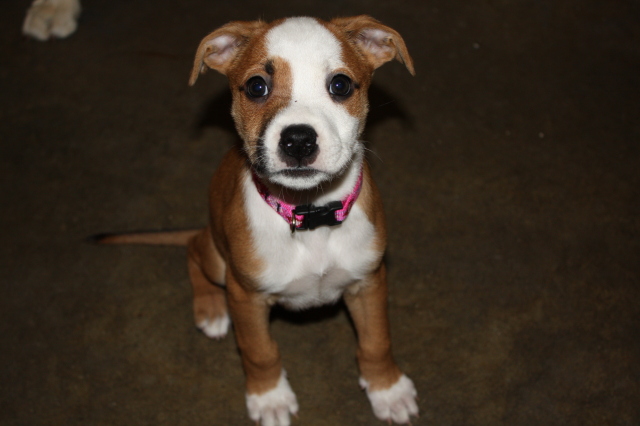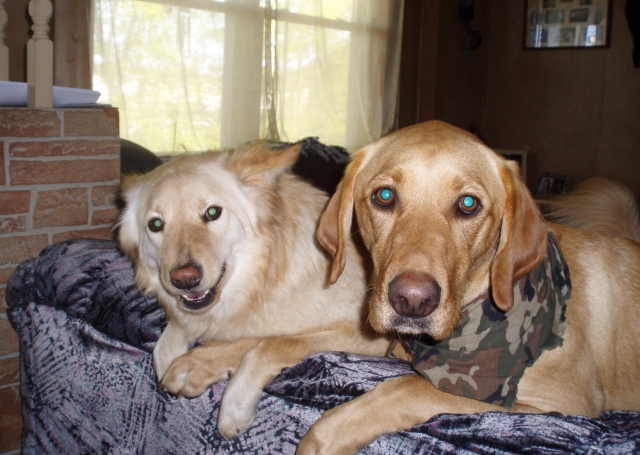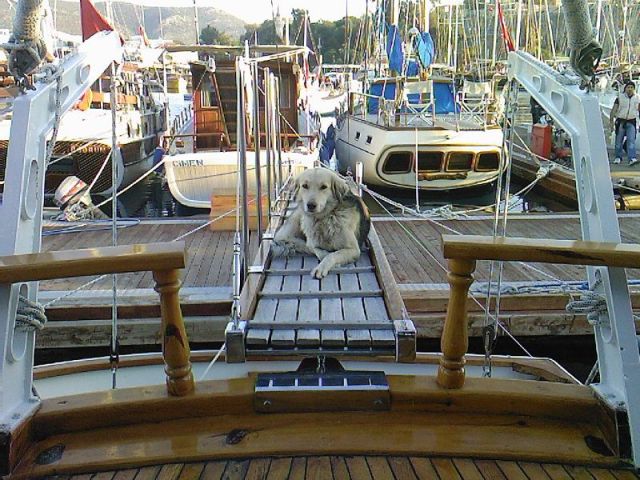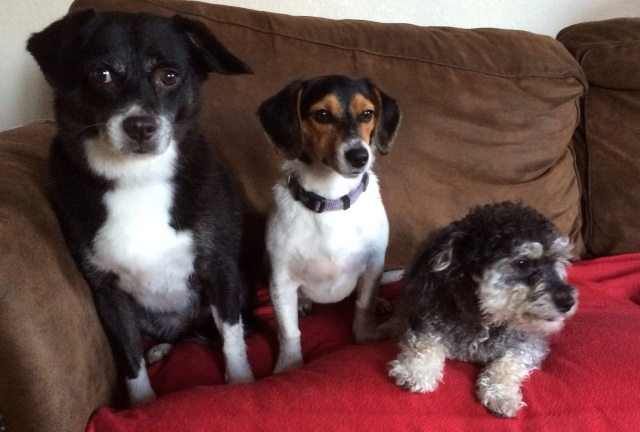QuestionHi,
I just adopted a pointer/springer spaniel mix. He is 8 mos old, very calm and sweet, eats regularly, and is housebroken. One problem is that he is frightened of leaving the house. He is not leashed-trained (we are working on it), but he also won't leave the house without a good deal of coaxing (or force, which I hate). When we are on walks, he is very skittish around traffic and tries to walk up to every door he sees. I hate pulling him out the door, but he's got to do his business outside. What do you suggest?
PS We've had him for 36 hrs.
AnswerSarah, stop fighting with him. Stop pulling and dragging him along, and stop trying to coax him. You need to take charge and make him understand that nothing bad is going to happen to him when you take him out to do his business.
Let him drag his leash around while in the house, and practice picking it up and letting him follow you around inside, so he doesn't learn that when you pick up the leash, you're going to make him go outside (which, at this point, is a negative to him).
If he balks, rather than trying to drag or pull him, you need to use a tugging motion to get him moving again. I saw a recent episode of Dog Whisperer where Cesar Milan explained this very well. I will tell you what he said, because it was so true! He said that when you try to pull a dog that is already resisting, it only makes the dog want to resist that much more. It 'locks' the brain into that resisting mode, and the dog is not going to move forward when in that state of mind. When you instead tug, tug, tug the leash, with a period of slack in the leash between each tug, it 'unlocks' the brain, and allows it to begin to move again, kind of like when you are jimmying a door open. Little movements work better than just trying to use brute force to push the door open. Does that make sense?
When you are doing this, do not turn around and face the dog, keep your shoulders up and back, and your head held high in a confident manner.
When the dog is moving forward again, use you voice in a happy, but not overly excited, tone of voice to praise the dog. After a few steps, you can stop and pet and praise him if you like, and then continue forward again.
Once he's okay going out to potty, you can try to resume his walks, but try to stay away from traffic up close. Walk him far enough away from traffic so that he can see and hear it, but does not react to it. Gradually work your way closer and closer as he is comfortable.
Good luck!

 Puppy Yelping
QuestionQUESTION: Hi! I have a 6 month old Cocker
Puppy Yelping
QuestionQUESTION: Hi! I have a 6 month old Cocker
 agression
QuestionNew Pup
QUESTION: I am so totally at wit
agression
QuestionNew Pup
QUESTION: I am so totally at wit
 Snapping/Snarling problem
Question
Gypsy and George
We have an 18 month old pure
Snapping/Snarling problem
Question
Gypsy and George
We have an 18 month old pure
 breed identification
QuestionMaggie
QUESTION: Hello - Ive hopped over
breed identification
QuestionMaggie
QUESTION: Hello - Ive hopped over
 Dog aggression
Question
The 3 of them
I have 3 spayed female do
Dog aggression
Question
The 3 of them
I have 3 spayed female do